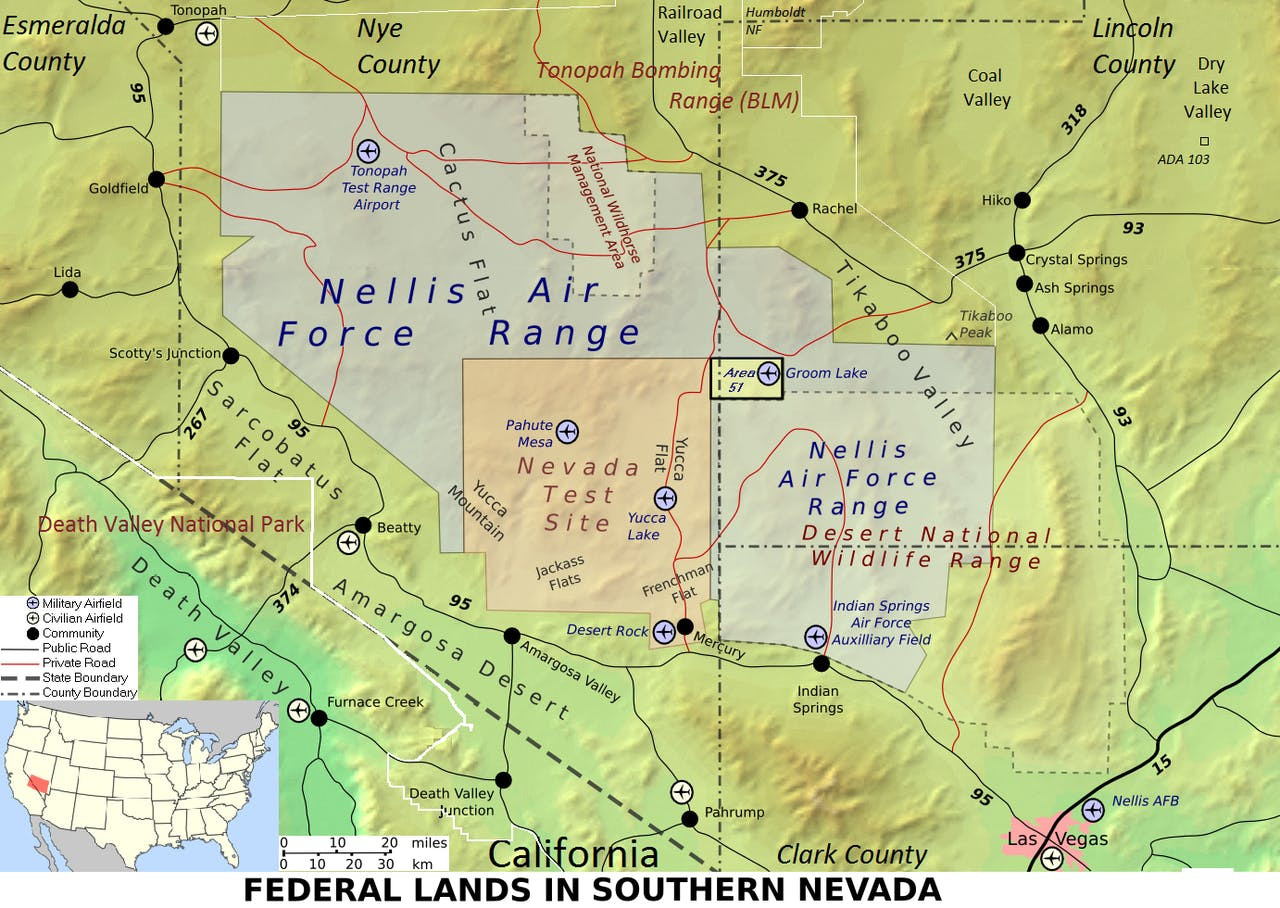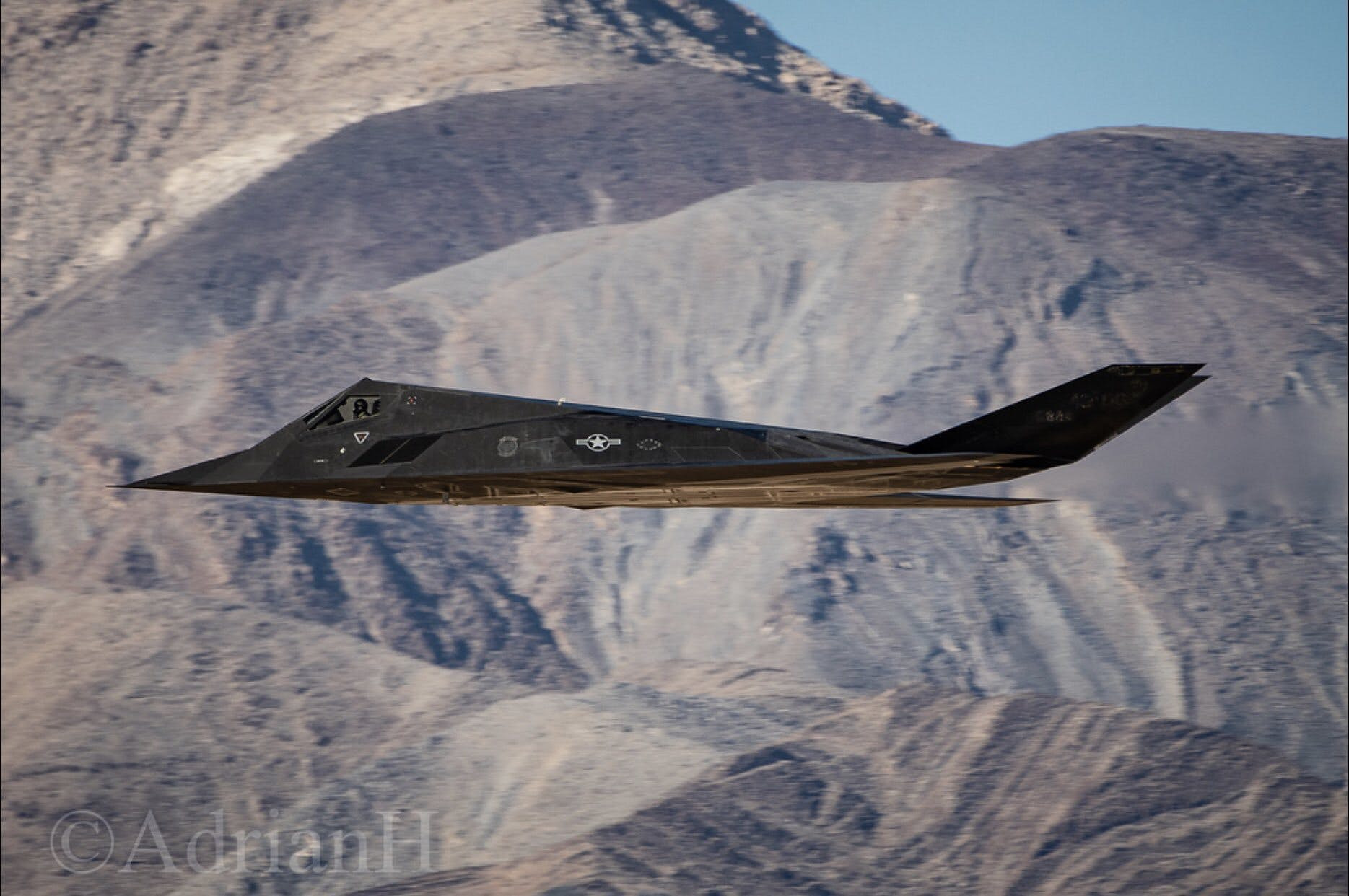After months of effort, The War Zone has been making steady headway in obtaining new details about the status of the U.S. Air Force’s remaining F-117 Nighthawk stealth combat jets and their future fates, including that one is headed for the Ronald Reagan Presidential Library. Still, it has long proven difficult to get any details about who is still flying at least some of these jets and why, which has long been one of the hottest topics of interest regarding these aircraft. Now we can confirm that the Air Force Test Center has been operating some of the Nighthawks to help out with the service’s research and development efforts.
How many of the 51 remaining F-117s out at the secretive Tonopah Test Range Airport are airworthy is “not for public release,” Air Force spokesperson Brian Brackens recently told The War Zone by Email. This is not necessarily surprising as the service often chooses not to disclose details about the availability rates for specific aircraft fleets or its overall force posture absent a Freedom of Information Act (FOIA) request. At the same time, it is hardly a secret that some Nighthawks are still flying despite a 2017 Congressional mandate to begin physically destroying the remaining examples. This same mandate rescinded a previous requirement for the Air Force to keep them all in what is known as “Type 1000” storage, which would have allowed personnel to relatively quickly return the aircraft to service, if necessary.
“On occasion, we [the Air Force] will fly certain aircraft to support limited research activities,” Brackens further explained to The War Zone. “Pilots from the Air Force Test Center” are behind the stick of the Nighthawks during those sorties, he added.

Since the Air Force officially retired the F-117s in 2008, there has been a relatively steady flow of pictures and video showing at least some of the aircraft still flying. Spotters have seen them in around the Nellis Range complex, wherein the Tonopah Test Range and its associated airport sit. Area 51 is also shielded, in part, from prying eyes in part by the Nellis Range and the Department of Energy’s adjacent Nevada National Security Site. They’ve also caught audio from some of the jets flying around Area 51’s highly restricted airspace, also known as “The Box” or “Dreamland,” and watched them zoom over the Mojave Desert in Southern California.

In that same period, there has been much discussion and speculation about what these Nighthawks are actually doing. This has included claims that some of the Air Force, or some other government agency, did reactivate a number of the aircraft and deploy them for combat operations in the Middle East. There is no evidence, of this, as The War Zone has previously explored in-depth, and we have also offered an equally detailed alternative explanation. In addition, FOIA requests we sent to U.S. Central Command, Air Force Material Command, the Air Force Safety Center and Hill Air Force Base, all turned up no records touching on the possible regeneration of the Nighthawks for combat missions.
It has always seemed more plausible that the Air Force, or even private contractors, would still be flying F-117s to support a variety of research and development and operational test and evaluation activities, relating to both other aircraft and ground-based systems. As The War Zone
has pointed out on multiple occasions, the Nighthawk’s stealth and other capabilities, while still obscure to the public in many regards, are very much a known quantity within the Air Force.
So, while it remains unclear exactly what work specifically the aircraft are supporting from time to time, there are ideal test assets for a wide variety of projects, such as developing new radars or radar-absorbing materials, testing new or improved sensors, or evaluating the signatures of new or existing stealthy materials against potential threats. The stealthy F-117s could also be valuable as aggressors.
As we at The War Zone
“We know for a fact that testing of advanced IRST systems is deeply underway. The F-15C/D and Super Hornet Forces are slated to get these sensors en masse soon. America’s enemies also use the technology for passive detection of airborne targets, which is totally immune to a stealthy plane’s small radar signature. In fact, we know an F-16 that flies test support out of Groom Lake/Area-51 is outfitted with the same IRST sensor intended for the Super Hornets and the Eagles. That aircraft was also caught on camera very near where the F-117 was, but it was blasting through “Star Wars Canyon.”
“The F-117 was designed specifically for reduced infrared signature. Its elaborate planar exhaust system spreads out and attenuates the jet’s twin GE-F404 engines’ thermal signature. This makes it a very attractive and challenging target for testing the abilities and limits of IRST sensors.
“New modular Active Electronically Scanned Array (AESA) radar systems are also being tested for a number of tactical jets and bombers, and the F-16, in particular. So the low-level profile the F-117s were flying, the location of the flights, and the positioning relationship with the F-16s makes near perfect sense in regards to air-to-air sensor testing. “
There had already been compelling circumstantial evidence to support the idea that the F-117s that were still flying were doing so in a test or evaluation role. Notably, in July 2018, Youtube user ‘pdgls‘ uploaded an audio recording of radio chatter between a pair of Nighthawks and a KC-135R tanker, as well as controllers on the ground. The two jets flew orbits near Area 51 and appeared to be going through a variety of test points. You can read our full analysis of that event here.
The confirmation that some of the F-117s are supporting “limited research activities” might help explain pictures that emerged earlier this year of one of the jets flying with what either appears to be some of its radar-absorbent skin removed or modified in some fashion. Of course, this could also be related to the demilitarization process, which the remaining aircraft, including those getting transferred to museums, are already beginning to go through.
All this said, it remains curious how secretive the Air Force has been about the F-117s and their continued activities, despite the aircraft certainly not being camera shy. While we now that the Air Force Test Center (AFTC), headquartered at Edwards Air Force Base in California and previously known as the Air Force Flight Test Center (AFFTC), has been supplying pilots when necessary, it remains unclear who exactly “owns” the Nighthawks and is managing this extended twilight period of their service lives. The F-117s do not appear in the inventory of aircraft under the management of the 309th Aerospace Maintenance and Regeneration Group at Davis-Monthan Air Force Base in Arizona, which oversees the U.S. military’s principal aircraft boneyard.

By every indication, the F-117s remain highly controlled assets under the purview of AFTC. Brackens, the Air Force spokesperson, said that responses to our queries have come by way a “program office” handling the aircraft. This is almost certainly an entity within AFTC, known as the Specialized Management Office, and sometimes abbreviated AFFTC/SMO, which is located at Hill Air Force Base in Utah. Based on responses to our FOIA requests, after the official retirement of the Nighthawks in 2008, this office took ownership of all of the program records from Air Combat Command.
Whether or not the airworthy F-117s are grouped together in a formal unit remains unclear. It is possible that they are simply attached to the detachments of the AFTC that are understood to manage operations at secretive facilities, including Tonopah and Area 51.
Whatever the case, the Air Force has said it is now moving closer to begin finally destroying the remaining F-117s for good, with the exception of those that are headed for public display. Now that we were finally able to get some information on the current state of the F-117 force and its activities, hopefully, more details will become available about the second lease on life that at least some of the aircraft have been enjoying for a number of years now.
Contact the author: joe@thedrive.com
